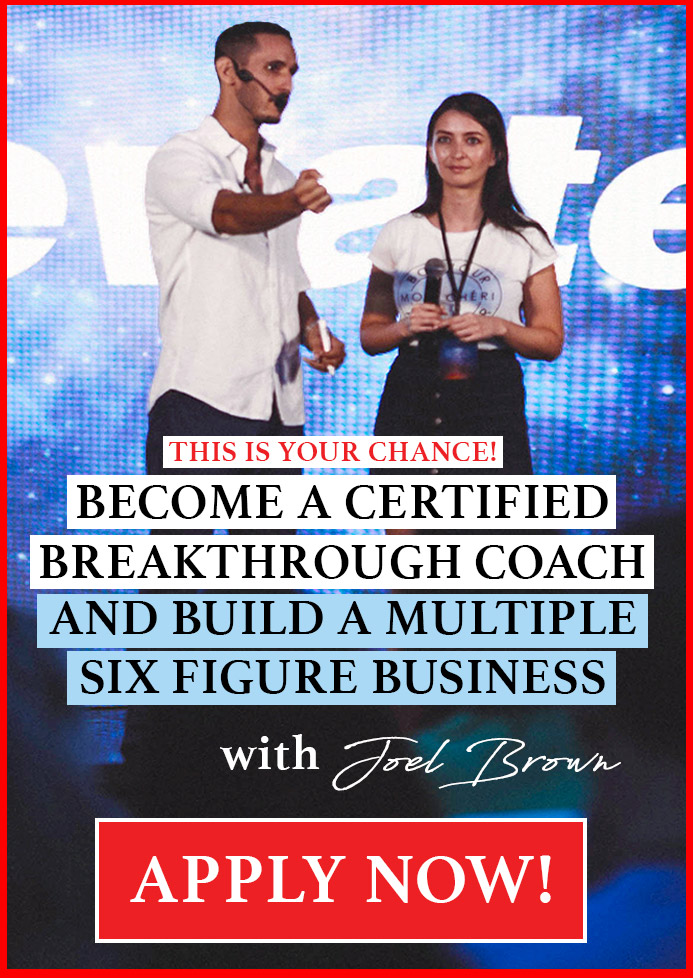Success Advice
5 Things I’ve Learnt From Selling Private Jets to 7 Figure Coaching Programs

When it comes to selling, in particular luxury/high ticket selling, I’ve pretty much seen it all. As the owner of both a sales agency, luxury sales brokerage and also working as a high ticket sales consultant/coach/strategist, I’ve been privy to nearly every sales trend, must do sales tactics or formulas that’s been mentioned and yet I hardly use any of them.
The only time I’ve ever attempted to sell with a sales script or set formula was in my first selling job at the age of 16, and I failed miserably at it. Less than 8 weeks later, I had failed to sell a single thing, not even a £9.99 contract. It was safe to say I believed I’d never get back into selling ever again. I’d even go so far as to say I hated selling. I was rubbish at it. The end.
Fast forward to today and the opposite is true. I love selling. Not only do I love selling but I sell with ease. I’ve closed sales on a private jet, supercars, yachts, right the way through to 5, 6, and 7 figure coaching/strategy programs. You name it I can sell it, I’ve carved a successful career in luxury/high ticket selling, not as an employee but as a business owner.
This isn’t just lip service. I’m so confident in my selling abilities, I have no problem pitching anyone I think I can help, including celebrities. Believe it or not, in the early days of my business I even pitched the Queen of England. I kid you not. She never got back to me but that doesn’t matter. What does is the fact I didn’t take it to mean anything about me as a person.
This is a common issue I see in the entrepreneurial space when it comes to selling; the habit of equating the value of their offer or themselves to getting a yes or no.
I’ve scaled to 8-figures in revenue across my businesses, work with footballers, celebrities and other High Net Worth individuals. Do I still get the odd ‘No’ – of course. Did I take it to mean that my service isn’t of value? Definitely not.
I enjoy selling. My aim is to ensure that you allow yourself to love selling too. After all sales are the lifeblood of any profitable business so it makes sense to enjoy selling if running a successful business depends on it.
Here are 5 things I’ve learnt along the way about selling:
1. Throw away the rulebook
The first major shift I made that took me from struggling to selling with ease is throwing away the rule book. No scripts, no formulas, no trying to sell how everyone else said it needed to be done. I carved my own path. Instead of trying to fit into someone else’s box by looking for answers that worked for others, I just leveraged what came naturally to me.
In the business space there will always be someone telling you they have the one and only magic way to sell. A magic formula, a specific sentence, the perfect sales script. In reality none of those things will work for you if they don’t fit with the way you naturally sell. In my agency and brokerage, every person goes through their own unique sales training. They aren’t asked to read off a screen or follow a formula set by me. They are taught to discover their own selling rule book, their own selling super power. The one that’s unique to them and will enable them to thrive as a salesperson.
The other side to this is teaching them how to understand who they are selling to, above and beyond their demographics and how they take their coffee. Traditional selling is so focused on showcasing ourselves in the best light, it often fails to look at how people actually like to buy and what turns them off about being sold to.
Selling doesn’t have to fit into a rule book made by someone else, you can sell however you want, in whichever way you want as long as it’s right for you.
2. I reclaimed selling for me
You won’t enjoy selling or find selling easy if you hate selling, or see it as something icky, period. The issue is, we’ve almost all experienced a selling situation that made us feel icky, we’ve felt pressured and left the sales experience feeling anything but lit up.
This is where you need to reclaim selling for you, despite the bad experiences I’ve had being sold to, I decided it wasn’t really ‘selling’s’ fault. It was to do with the way people were implementing sales tactics or were so out of alignment with the way they were selling I could literally feel something was off.
Sales wasn’t the issue in any of those situations, rather it was how the person chose to do the selling.
I decided to view selling in a different light, I decided to see selling for what it really was and separated it from those negative, icky experiences and beliefs. I see selling as an empowering experience for both the seller and for the buyer. Given the right environment, people absolutely love to buy. Given the right experience, people will rave about that selling experience to their friends. Turning selling into a positive for yourself is the first step into selling with ease and confidence.
3. It’s never about the ‘thing’
One of the biggest mistakes I see people make and indeed made myself (oddly enough the sales training I went through at the call centre also trained people to do this) is selling the thing or thinking that the person you’re selling to even cares about the thing itself.
They don’t. Hear me out. Whether you’re selling a service, coaching package or an actual product, successfully making the sale is not about the thing itself. It’s about how that thing is going to make someone DO/FEEL/CHANGE/ACHIEVE. It’s about the destination; what will happen for the buyer as a direct result of making this purchase rather than the thing itself.
The number of times I have sold a service and a client has gone on to have an amazing outcome before we even got started. It’s not just the ‘thing’ that gets results, often it’s the mental and emotional state behind the decision to do ‘something’ about an issue that kickstarts the transformation.
If you keep selling the thing, you’ll forever feel as if you’re having to pull teeth and convince people to buy from you.
4. Emotion is always the primary driving factor when purchasing
How you make someone feel when selling to them will have a big impact on whether they buy or not. In the luxury space in particular, this is an important point to note. Our clients at the brokerage aren’t buying the supercar because it’s a practical mode of transport, they’re buying it because it triggers a certain emotion within them that makes them feel good. This is the same for selling in general. No matter what you’re selling, they’ll ultimately say yes and do so with ease if you trigger their individual buying emotions.
Many people believe that selling is about what you say. It isn’t. Selling is about how you make your client feel, in that moment, in the sales experience. It’s not driven by words, rather by feelings. If you can understand this and leverage it, leads will forever be like putty in your ethical hands. Trust me, it’s one of our secret weapons!
5. People don’t buy in the same way
Many people forget that before anything else, people are people first and as a result, due to our individual experiences, we are all different. We don’t buy in the same way, we don’t buy for the same reason, much in the way not every selling style aligns with our personality or values. One of the most important things to understand is who you’re selling to from the aspect of who they are as a buyer. Not just who they are as a person but who are they as an actual buyer? What drives them to buy? Why do they buy? What is their buying profile?
You may find that you have different buyers for different offers, in which case the best sales process for your offer will also differ. Dive deeper into who you’re selling to and understand what drives them to really create a selling experience that nails getting the ‘yes’ for yourself.
Ultimately, the biggest thing I’ve learnt from selling across the board is, selling is an experience for everyone involved. It’s one that can leave you as a seller feeling on a massive high or a massive low. The same can be said for the buyer. The real key in selling is to understand yourself, your selling superpower – as in how you best connect with people generally, and create selling experiences that are unique to the type of buyer you’re selling to. Your aim is to create an emotional selling experience that leaves them excited to buy from you before you’ve even asked for the sale!
Business
If Your Business Internet Keeps Letting You Down, Read This
From smoother operations to better security, dedicated internet access is quietly powering today’s high-performing businesses.

Today, a dependable internet service is the bedrock for uninterrupted business operations. Many organizations rely on stable online connections for communication, data transfer, and customer interaction. (more…)
Did You Know
How Skilled Migrants Are Building Successful Careers After Moving Countries
Behind every successful skilled migrant career is a mix of resilience, strategy, and navigating systems built for locals.

Moving to a new country for work is exciting, but it can also be unnerving. Skilled migrants leave behind familiar systems, networks, and support to pursue better job opportunities and a better future for their families. (more…)
Life
10 Research-Backed Steps to Create Real Change This New Year
This New Year could finally be the one where you break old patterns and create real, lasting change.

Every New Year, we make plans and set goals, but often repeat old patterns. (more…)
Change Your Mindset
The Silent Skill That Makes People Respect You Instantly
What truly earns respect and why most people go about it the wrong way

Everybody craves respect but not everyone earns it. Some people believe that a title, years of experience, or a position of authority automatically entitles them to respect. (more…)
-

 Did You Know4 weeks ago
Did You Know4 weeks agoHow Skilled Migrants Are Building Successful Careers After Moving Countries
-

 Health & Fitness2 days ago
Health & Fitness2 days agoWhat Minimalism Actually Means for Your Wellness Choices
-

 Business21 hours ago
Business21 hours agoIf Your Business Internet Keeps Letting You Down, Read This
-

 Did You Know2 hours ago
Did You Know2 hours agoWhy Most Online Courses Fail and How to Fix Them

























